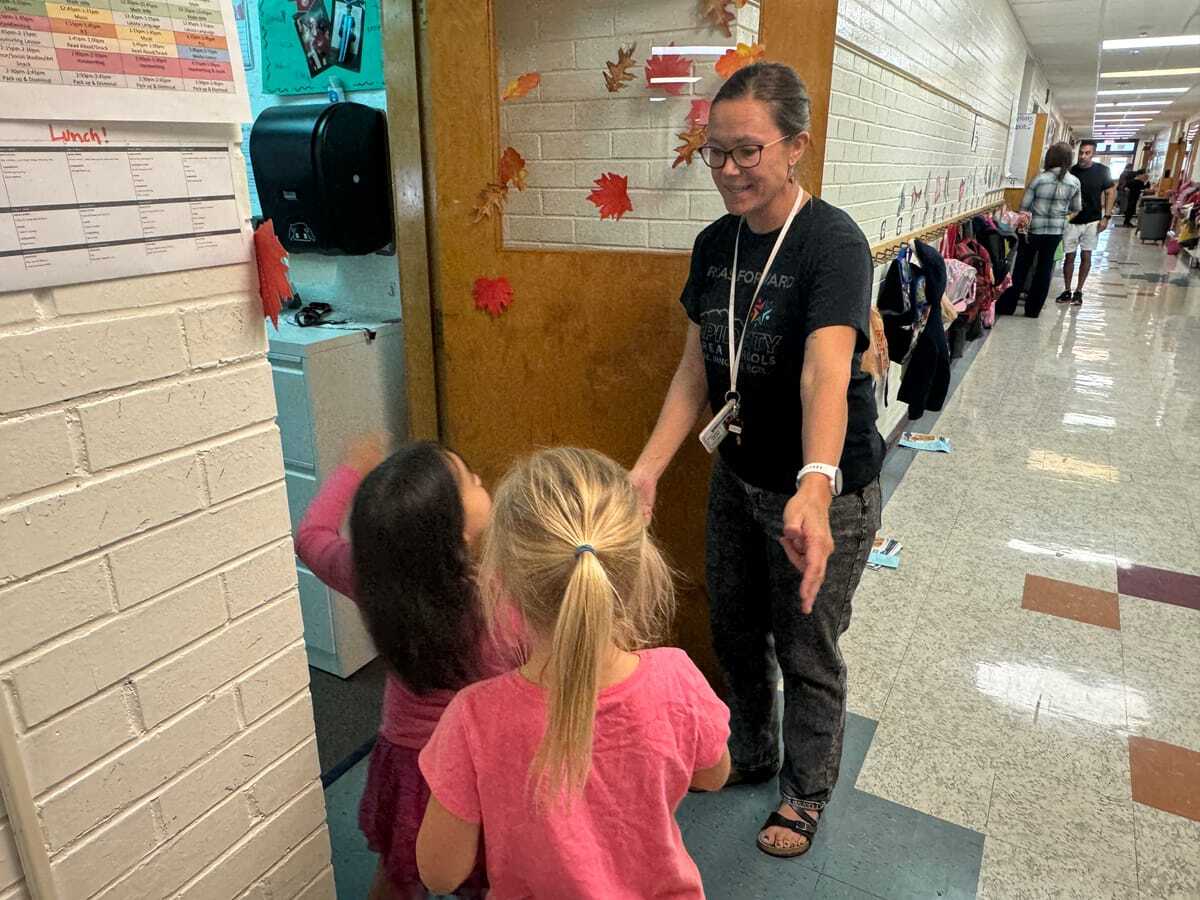
Bart Pfankuch / South Dakota News Watch
RAPID CITY, S.D. – Elementary school teacher Sarah Gross has seen the toll that low teacher salaries and minimal pay raises can take on teachers, schools and public education in general.
In recent years, she has watched as a number of colleagues have left the teaching field and taken their talent, knowledge and experience with them.
At South Park Elementary School in Rapid City, where Gross now teaches, three veteran teachers left the district in the past two years for higher pay and better benefits in the Douglas School District, a high-pay district in nearby Box Elder that serves families from Ellsworth Air Force Base.
“When we train up our new people, and then we lose them to other places, whether it be Douglas or Wyoming or some other state, we lose that person as well as our investment in them and their institutional knowledge and experience,” Gross said.
She was not surprised to see a new data analysis showing that despite recent salary gains, most South Dakota teachers have lost significant purchasing power due to inflation and limited annual pay bumps.
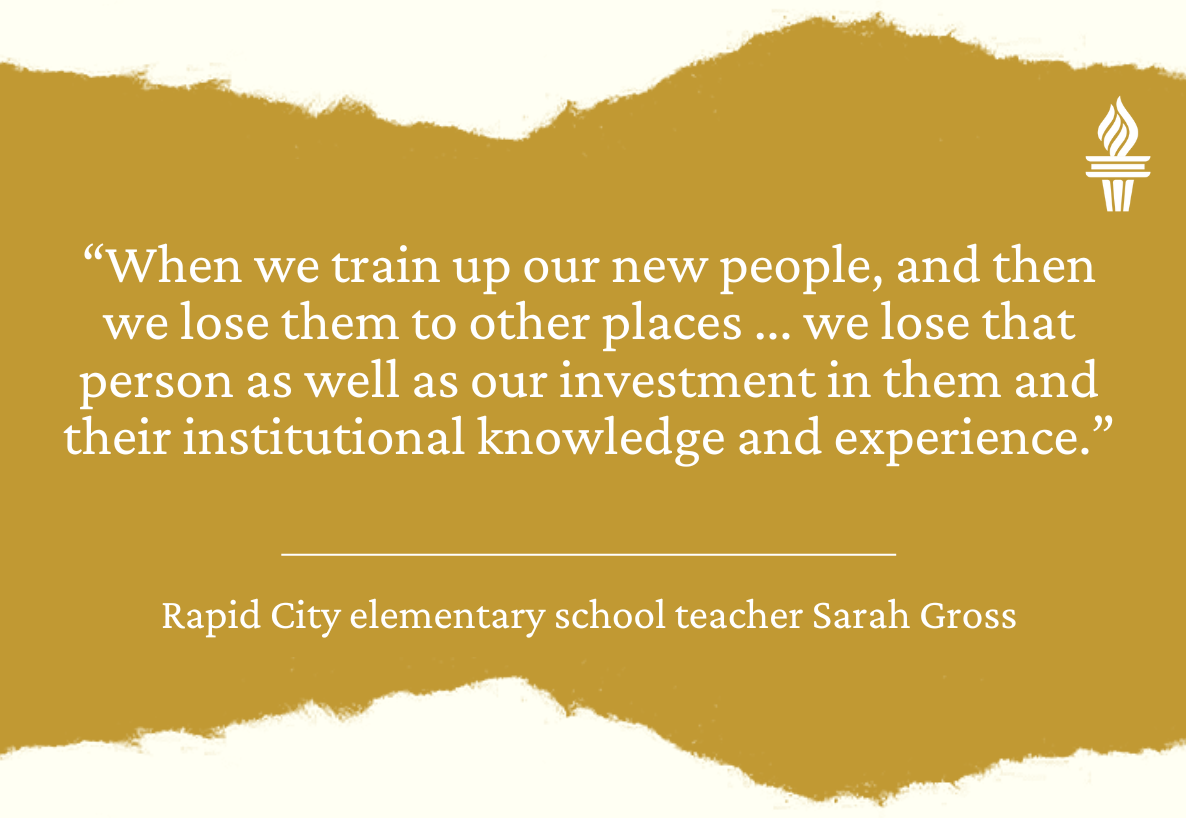
“We’re losing a lot of people who don’t teach because of the pay, which can be prohibitive, and when you can’t afford your rent, you have to make choices that are realistic for your life,” Gross said.
Teacher salaries up, purchasing power down
Over the past decade, governors, legislators and local school boards have placed a high priority on raising teacher salaries in South Dakota, which have long been at or near the bottom in the nation.
And over the past few years, they have succeeded, as teacher pay has risen either moderately or significantly in every public school district in South Dakota since 2017, according to state data. The average salary increase across all districts was 13.5% and as high as 20% in some districts from 2017 to 2023.
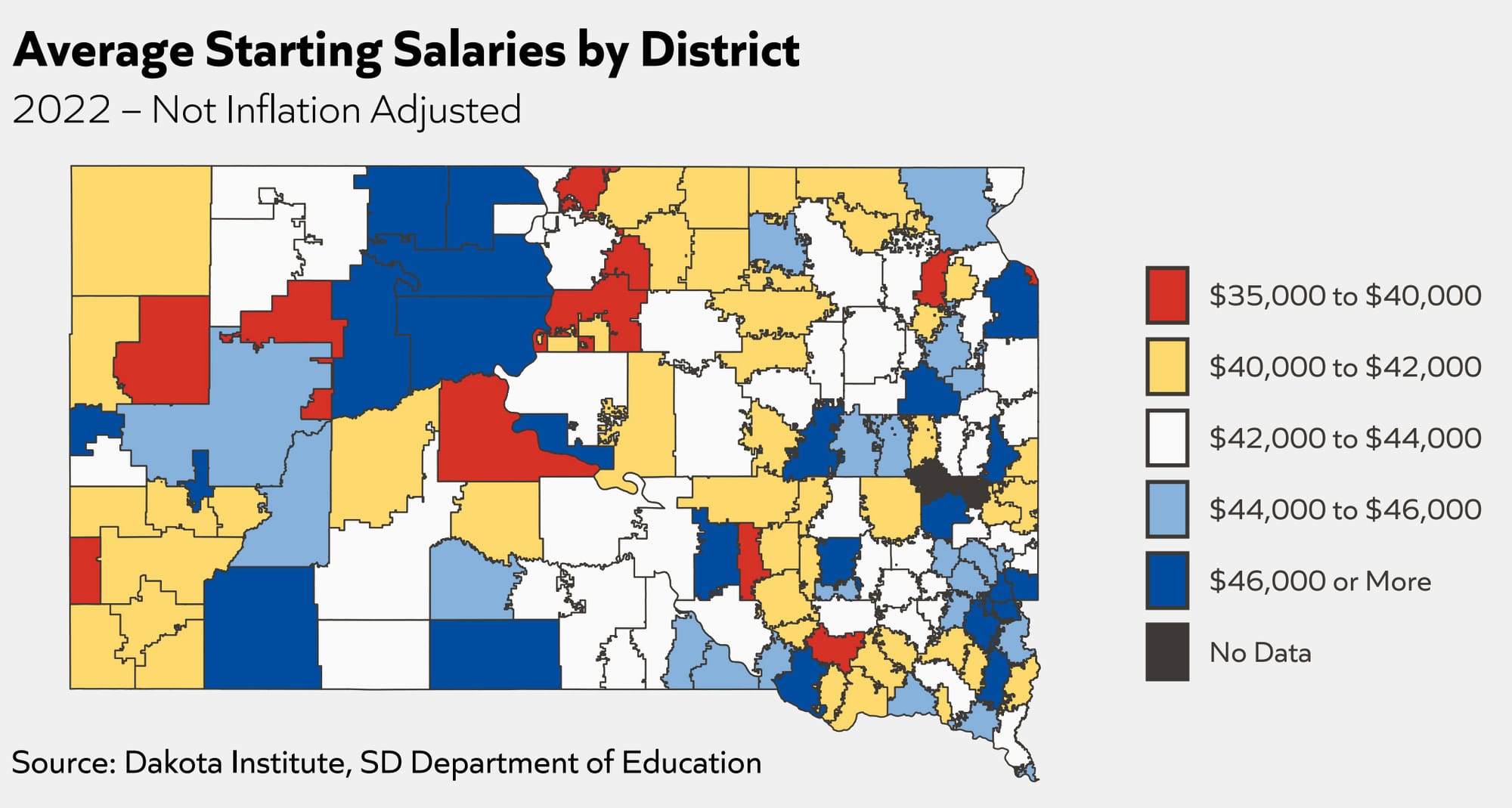
But those gains have not translated into more spending power for educators, and in fact have in most cases left them further behind than they were before the pay-raise push.
When inflation is factored in, the vast majority of teachers have lost net spending power over that time, and some have seen their inflation-adjusted pay drop by more than 20% between 20017 and 2023, with rural school districts often taking the biggest hits, according to a new analysis by the Dakota Institute, a nonprofit economic research organization.
“It’s like they go into the grocery store one year and buy a cartful of groceries, and even though they get a pay raise, they go a few years later and can only buy 78% of the stuff they were able to buy before,” said Kyle Kopplin, an economics professor at Black Hills State University, who authored the analysis for the Dakota Institute. “Teacher salaries are rising, which is great. But ultimately, it could be that even though salaries are up, teachers are actually worse off.”
Kopplin said he wanted to examine teacher pay in the context of inflation and cost-of-living increases to a statewide conversation that often paints a dire picture of teacher pay. Further, he said, he wanted to look at the impacts of recent efforts by state and local officials to raise teacher pay in an attempt to increase the state’s competitiveness.
“It’s such a difficult and important job that I thought it’s worth further examination,” he said.
Average teacher pay falls back near bottom
Some of Kopplin’s key findings show that:
- Almost all South Dakota teachers saw pay and benefit hikes between 2017 and 2023, with a few seeing a 40% jump in that time period and a statewide average increase of 13.5%.
- Teachers in 139 of 149 public school districts saw their inflation-adjusted wages – and their personal spending power – fall from 2017 to 2023, with a drop of more than 20% in some districts.
- The average starting salary for South Dakota teachers in 2023 was $42,907, though some districts were as low as $35,000. The state ranks 27th nationally in starting wage and was higher than four of six neighboring states.
- The average overall salary for teachers in 2023 was $53,153, with some districts much lower at $42,000. The state ranks 49th nationally and lower than all neighboring states in average salary.
- Starting and average salaries were highest in reservation districts, where competition for teachers is greatest. Rural and remote districts generally had the lowest starting and average salaries and benefit package values.
- South Dakota teachers received benefit packages ranging in value from $6,000 to more than $20,000, and the relative cost of living in the state was nearly the same as in neighboring states except for Minnesota, which was much higher.
Teaching field sensitive to inflation impacts
Almost all South Dakotans in all industries have been affected by inflation that hit a recent high of 9.1% in June 2022, according to the U.S. Bureau of Labor Statistics. Those losses in purchasing power remain even as inflation fell to a three-year low of 2.4% in September.
Inflationary costs may be even more important when it comes to public education, which in 2023 faced a national shortage of 55,000 teachers, with about 180 vacancies in South Dakota, according to a study by the Annenberg Institute at Brown University.
South Dakota faces strong competition for teachers among Great Plains states, where average salaries are higher and teacher vacancies are also higher, topping 400 openings in North Dakota and roughly 1,000 in Iowa and Minnesota.
The Dakota Institute analysis reveals that more work needs to be done to continue to make South Dakota competitive for new and experienced teachers, said Sandra Waltman, director of public affairs for the South Dakota Education Association.
“The report outlines that we still have a lot of work to do in terms of ensuring that teacher salaries are competitive in the region,” Waltman said. “And while we’ve made some progress, things like inflation continue to make the challenge of recruiting and retaining teachers something we need to focus on.”
Waltman said it is good news that South Dakota districts have raised the pay for starting teachers, which aids in regional competitiveness. But she said a major challenge remains in regard to raising the average teacher salary, as some teachers may leave the state as they notice their pay is flattening off and not rising as fast as in other states.
The SDEA, which represents about 6,000 teachers in South Dakota, said one way school districts may slow wage growth is that when older, higher-paid teachers retire, the districts return the money those teachers would have received back to the salary pool rather than using it for other educational needs.
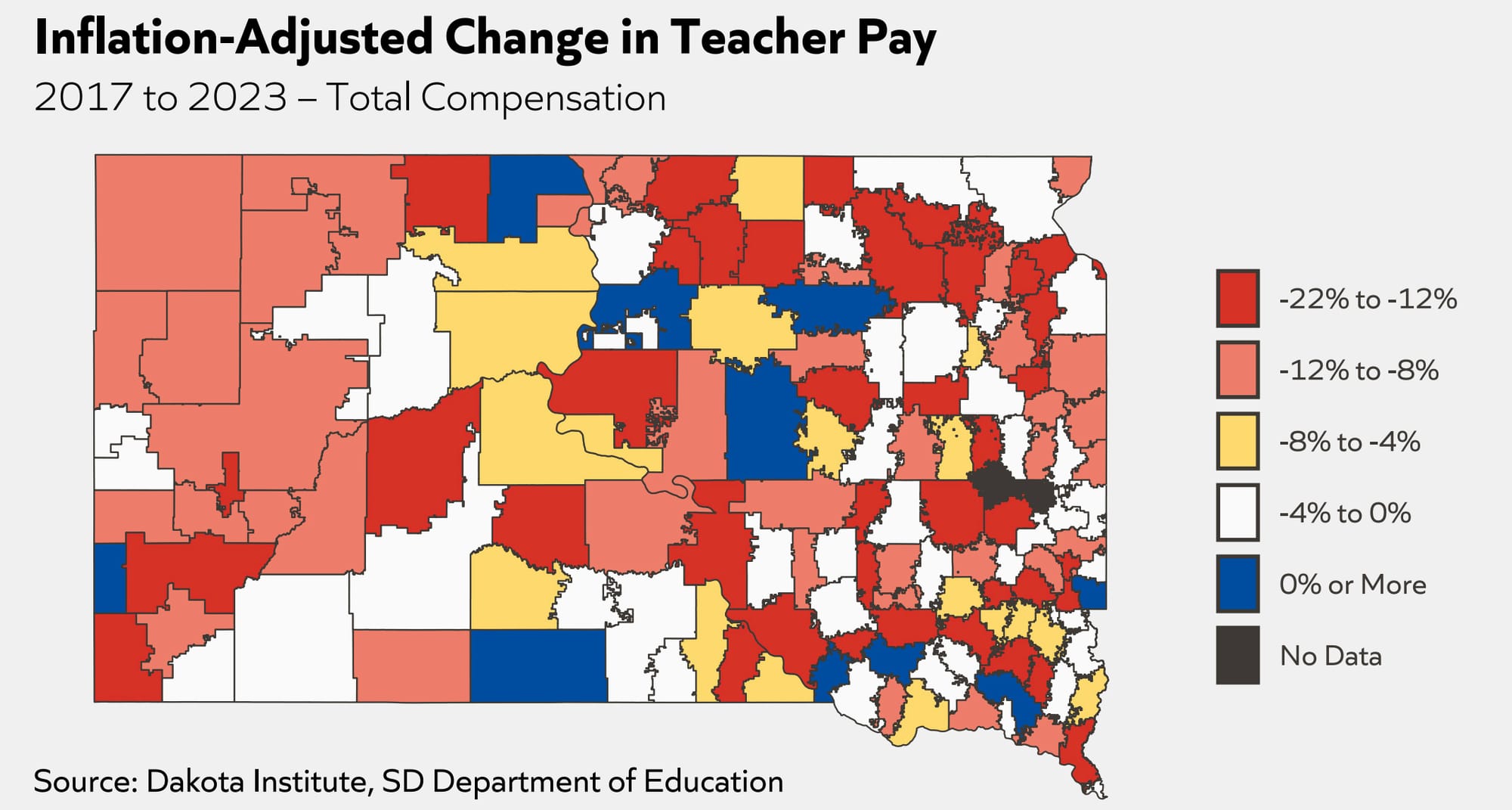
Waltman said inflation hits many teachers in two different ways: with less spending power from their salaries overall and when they spend money out of their own pockets on supplies and materials needed to round out their educational lesson plans.
Waltman said SDEA will continue to urge the Legislature to keep increasing allocations to the state education funding formula while also supporting local efforts to be creative in finding ways to improve teacher pay.
Increasing pay is one way to show teachers and potential teachers that they are valued, Waltman said. Higher pay will also encourage them to enter a profession that has become increasingly stressful and difficult in recent years due to COVID, political division, and salary and funding challenges.
“Teachers go into this field knowing they’re not going to make a lot of money,” she said. “But with that being said, we do need quality teachers, and we do need to make sure that they can make a living that makes it attractive to go into the field.”
Tough time to be a teacher
Gross, 40, has taught for 18 years in Colorado and South Dakota, and has seen the teaching profession become more stressful and challenging in that time.
Teachers must keep up with emerging technology and still connect personally with students who may bring challenges from their home lives, Gross said.
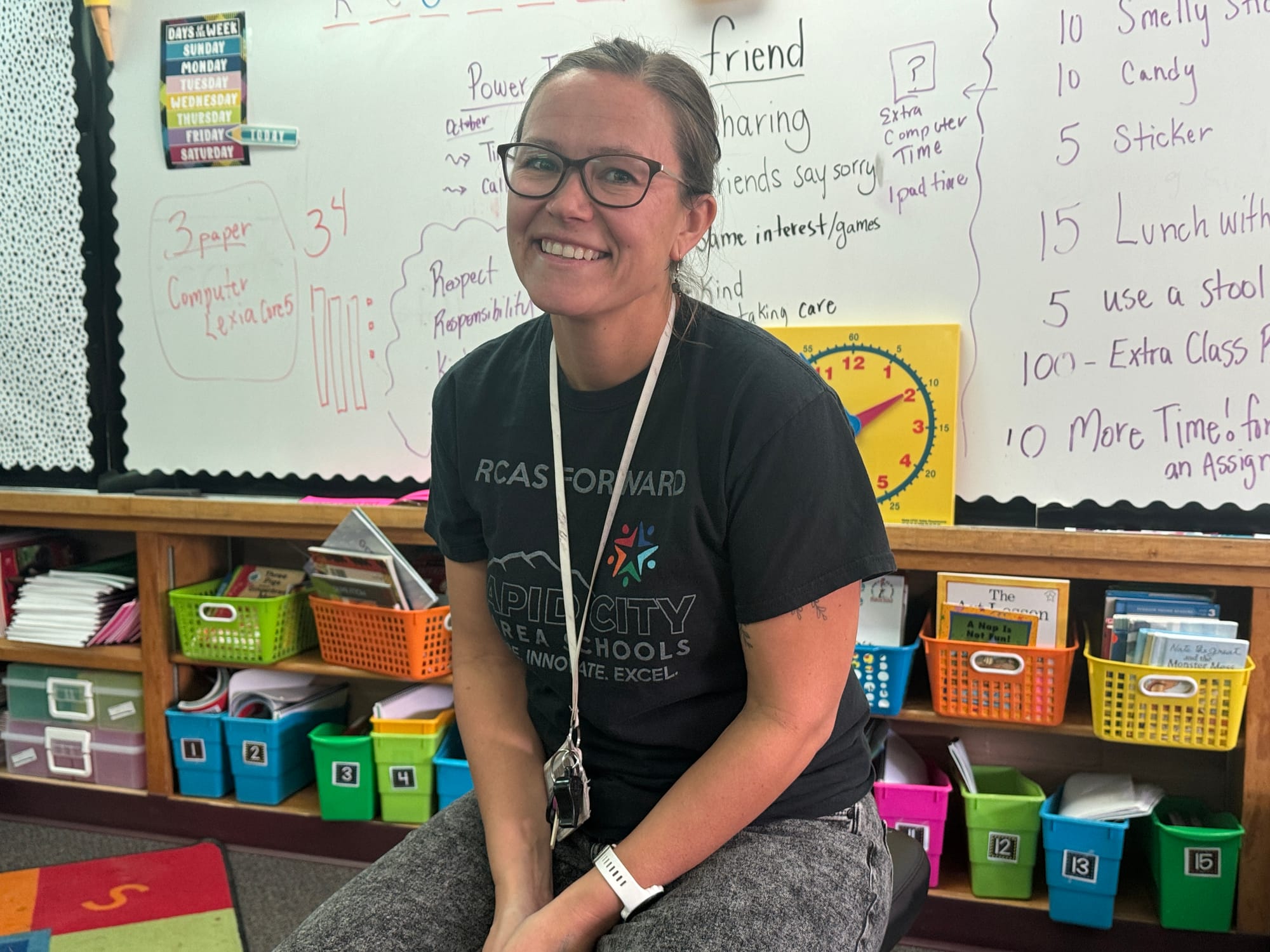
In some districts across the country, teachers face new pressures from the culture wars that have led to book banning and criticism of what is taught and how. The threat of school shootings can also add unwanted pressure.
The school where Gross works will be 75 years old next year, and maintaining experienced staff has been a challenge.
Gross, who said she loves teaching, helping children and having opportunities to continuously hone her craft, is protected somewhat from the salary limitations because her husband is a nurse practitioner who makes much more than her.
But for some teachers, and especially for lower-paid paraprofessionals, salary limitations may be a deal-breaker that keeps them from entering the teaching field or from staying as long as they may like.
“It’s all about recruitment and retention,” Gross said. “We can overlook a lot of things, but when it gets to be too many things, and then you’re also not being compensated as much as others, it makes a difference in what you can tolerate and what you can put up with.”
State efforts in play but falling short
State lawmakers and governors have taken steps to raise teacher pay, and while helpful, the increases have been short-lived.
In 2016, in an effort led by former Gov. Dennis Daugaard, the Legislature raised the state sales tax by 0.5% to raise more money targeted at improving teacher pay. That effort boosted salaries significantly the first year, but the increases to state aid slowed significantly in the years following.
The 2024 Legislature passed a bill, later signed by Gov. Kristi Noem, which sets a minimum teacher salary of $45,000 starting July 2026 and requires raises that are nearly commensurate with any increase in the state education funding formula.
Despite that, increases to state education funding in South Dakota have only mirrored or have fallen below increases in neighboring states, reducing competitiveness of South Dakota school districts in filling open positions. And, after bumping the state’s average pay ranking to 47th in the nation in 2007, the state has once again fallen back to 49th in average teacher pay.
Pay a key issue for new teacher hires
Recruiting new teachers is a challenge everywhere in South Dakota, but the hurdles tend to be even higher in rural districts, which dominate the state education system and often are home to low tax bases and declining populations.
In Bowdle, an Edmunds County town of about 500 people in north-central South Dakota, stagnant teacher salaries have been a burden when trying to lure new teachers to the district, said superintendent Skyler Frederick.
The district had trouble filling openings the past few years and this year lured back a retired music teacher to round out its staff of 16 educators, Frederick said. He called the process of maintaining full staffing “like putting jigsaw puzzle pieces together.”

The starting teacher salary in the Bowdle district was $34,700 in 2016 and eked up slowly to $37,000 in 2023, according to the National Education Association. While he cannot offer high salaries, Frederick said the district pays a living wage and operates in a quiet, welcoming and safe small town with many opportunities for outdoor activities.
Still, the salary issue comes up frequently in recruiting efforts, he said.
“I think everybody wants to feel valued in their job, whether that’s great culture and communication in the workplace or monetarily,” he said.
This school year, with some creative budgeting, Frederick said the district was able to provide all teachers with a $5,000 a year raise, bringing the starting teacher pay up to roughly $45,000.
Frederick said strong community support is critical to maintaining the school system and keeping teacher salaries competitive.
Bowdle benefits from a local opt-out, in which residents agree to pay more in property taxes to boost funding for education. The district will soon seek a new opt-out so it can continue to offer teachers a solid benefits plan that includes the state retirement system, Frederick said.
“Our community has been steadfast that they want a local school system here, and community support is part of that,” he said. “Education is an extremely important profession, and we need to keep morale up and have our teachers feel motivated and enthusiastic, and salary definitely plays a part in that.”
